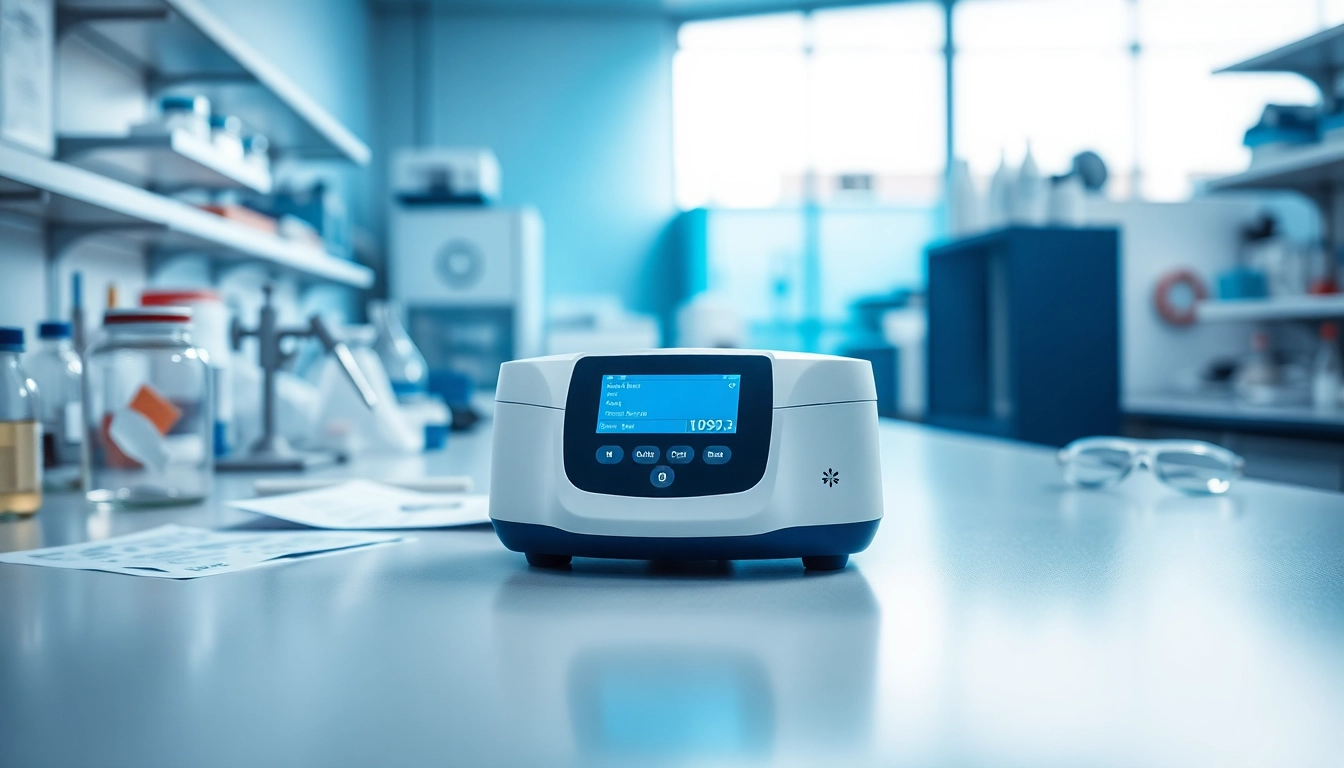What is a Drug Impairment Test?
Definition and Purpose
A drug impairment test is a critical tool used to assess whether an individual is under the influence of drugs or substances that impair their ability to function normally, especially in high-stakes environments like driving or operating machinery. The primary purpose of these tests is to ensure public safety, maintain regulatory compliance, and mitigate the risks associated with impaired actions due to substance use. As drug use becomes more prevalent in society, the implications of drug impairment testing have grown, making it essential for workplaces and law enforcement to have reliable methods for evaluation. A comprehensive understanding of a drug impairment test can streamline procedures, enhance safety protocols, and reduce liability.
Common Types of Drug Impairment Tests
Drug impairment tests can be categorized into several types, each with its own methodologies and applications:
- Field Sobriety Tests (FSTs): Commonly used by law enforcement, these tests assess physical and cognitive abilities through tasks like walking a straight line or performing a series of movements.
- Blood Tests: These tests measure the concentration of drugs in the bloodstream. They provide quantifiable data on recent usage but can involve complex legal procedures for collection.
- Urine Tests: These are among the most prevalent forms of drug testing due to their ease of administration and ability to detect a variety of substances, although they may not indicate current impairment.
- Oral Fluid Tests: Also known as saliva tests, they are gaining popularity due to their non-invasive nature and ability to detect recent drug use.
- Hair Tests: These tests can provide a long-term history of drug use, but they are not typically used for immediate impairment assessment.
Legal Implications of Drug Impairment Testing
The legal landscape surrounding drug impairment testing is complex and varies by jurisdiction. Employers and law enforcement agencies must navigate various federal, state, and local regulations to ensure that their testing practices comply with the law. Drug testing policies must also accommodate employee rights while balancing workplace safety obligations. For example, random testing can be legally permissible in certain industries, while in others, it may be seen as invasive. Legal challenges can arise from improper testing procedures or failures to comply with stipulated regulations, making it essential for organizations to develop robust drug testing policies and provide appropriate training to personnel involved in administering these tests.
Methods of Conducting Drug Impairment Tests
Urine vs. Blood Testing: What You Need to Know
Urine and blood tests are commonly used methods to evaluate drug impairment, each with distinct advantages and limitations:
Urine Testing
Urine testing is widely used due to its straightforward administration and cost-effectiveness. It can detect a range of substances, including marijuana, cocaine, opiates, and amphetamines. However, one major drawback is that urine tests do not indicate current impairment but rather past usage. Detection windows for various substances can vary; for example, marijuana can be detected for days or even weeks after use, while other drugs may be present only for a short period.
Blood Testing
Blood tests provide a more accurate reflection of current impairment, as they measure the actual levels of substances in the bloodstream at the time of testing. However, they are more invasive and require professional medical personnel to administer. Blood tests can provide immediate results, making them ideal for situations where quick assessment is necessary, such as roadside checks for suspected impaired drivers.
Advanced Technologies in Drug Impairment Testing
As technology progresses, innovative solutions are emerging in the realm of drug impairment testing. These advancements aim to improve the accuracy, efficiency, and acceptance of testing methods. Technologies such as:
- Rapid Testing Devices: Portable breath analyzers and saliva testing kits are becoming increasingly reliable, allowing for immediate on-site testing.
- Mobile Applications: Some applications use algorithms and databases to help users understand their level of impairment based on factors such as recent substance intake and operational tasks.
- Virtual Reality Testing: Research is underway to utilize VR technology to simulate real-world scenarios to objectively measure impairment by assessing reaction times and motor skills.
Testing Procedures and Best Practices
Implementing effective drug impairment testing involves adhering to a series of best practices:
- Establish Clear Policies: Define the circumstances under which testing will occur, ensuring all employees are aware of expectations. This includes guidelines on reasonable suspicion testing and random drug screening.
- Training Personnel: Staff should be properly trained to administer tests and document results accurately to ensure legal compliance and minimal disputes.
- Maintain Testing Integrity: Use standardized testing kits to minimize variability and ensure reliable results, regularly calibrating equipment where applicable.
- Communicate Results Transparently: Maintaining clear communication with tested individuals, providing support for those who test positive, and ensuring adherence to confidentiality standards.
Factors Influencing Drug Impairment Test Outcomes
Substance Variability and Detection Times
The outcome of drug impairment tests can be heavily influenced by the specific substances being tested. Each substance has a different metabolism rate within the body, affecting detection times:
- Alcohol: Typically, alcohol is detectable in blood for up to 12 hours, while it can be found in urine for 24-48 hours depending on the amount consumed.
- Cannabis: THC, the active ingredient in marijuana, can be detected in urine for up to 30 days in heavy users but may only be traceable for a day or two in occasional users.
- Opioids: These drugs can be found in urine for 1 to 3 days after use but can depend on the specific type of opioid and usage frequency.
Environmental and Psychological Influences on Testing
Other factors that can influence test outcomes are environmental and psychological. For instance, stress levels and environmental conditions can impact the physiological responses during testing. Additionally, psychological factors like motivation can affect how someone performs on physical tests like FSTs. Hence, it is crucial for testing administrators to monitor these conditions to interpret results accurately.
Workplace Policies and Safety Considerations
Workplace safety policies must align with effective drug impairment testing protocols. Employers should conduct risk assessments to understand the substance use prevalence in their industry and create tailored drug testing policy frameworks. Regular audits of these policies and their effectiveness are also essential to adapt to changing regulations and employee concerns about privacy.
Challenges in Drug Impairment Testing
Legal and Ethical Concerns
Legal battles surrounding drug impairment testing often stem from ethical concerns, particularly regarding employee rights. Challenges such as discrimination claims due to testing or privacy violations must be handled delicately. Employers are advised to remain transparent about testing protocols and ensure they comply with employment laws to mitigate backlash.
Understanding Testing Limitations
Despite advancements, drug impairment testing is not foolproof. For instance, traditional urine tests only indicate the presence of drugs and do not measure immediate impairment levels. Moreover, variations in individual metabolism and subjective interpretations of performance can further cloud test results. Organizations should be aware of these limitations and complement drug testing with other safety measures and evaluations.
Public Perception and Misconceptions
Public perception of drug impairment testing is often marred by misconceptions about the accuracy and reliability of tests. Misunderstandings regarding the type of drugs that can be detected and the timeframe of detection can lead to stigmatization and the potential for wrongful accusations. Educational initiatives aimed at clarifying these misconceptions can help promote a more informed perspective among employees and the general public.
Future Trends in Drug Impairment Testing
Innovative Testing Solutions on the Horizon
The ongoing evolution of drug impairment testing is expected to be characterized by innovative solutions focusing on efficiency and accuracy. Researchers are exploring options such as:
- Dry Blood Spot Testing: This emerging technique involves the collection of a small amount of dried blood that can be analyzed for drug content, offering ease of collection and transport.
- Smartphone-Based Testing: Future developments may involve mobile technologies leveraging smartphones to administer and analyze tests, making drug impairment assessments more accessible.
The Role of Technology in Improving Accuracy
With advancements in artificial intelligence and data analytics, the future of drug impairment testing could include more precise algorithms to better interpret test results, thus enhancing accuracy in impairment assessment. Enhanced devices may also streamline the process by minimizing human error in results interpretation.
Adapting to Changing Laws and Regulations
As drug regulations evolve, particularly concerning cannabis in various states, testing methods are likely to need adjustments. Continuous education for HR professionals and law enforcement about these changes will be crucial in maintaining compliance and ensuring effective implementation of drug impairment tests.















Leave a Reply